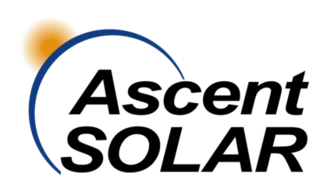
Portland General Electric (PGE) is a Fortune 1000, investor-owned energy company based in Portland, Oregon, that generates, transmits and distributes electricity, serving almost two-thirds of Oregon’s commercial and industrial activity. PGE is regulated by the Oregon Public Utility Commission. Founded in 1888 as the Willamette Falls Electric Company, the company has been an independent company for most of its existence, though was briefly owned by the Houston-based Enron Corporation from 1997 until 2006, almost 20 years ago, when Enron divested itself of PGE during its bankruptcy.

The Oregon Convention Center is a convention center in Portland, Oregon. Completed in 1989 and opened in 1990, it is located on the east side of the Willamette River in the Lloyd District neighborhood. It is best known for the twin spire towers, which provide light into the building's interior and for housing the world's largest Foucault pendulum. The center is owned by Metro, the Portland area's regional government, and operated by the Metropolitan Exposition and Recreation Commission, a subsidiary of Metro.

According to data from the US Energy Information Administration, renewable energy accounted for 8.4% of total primary energy production and 21% of total utility-scale electricity generation in the United States in 2022.

The U.S. state of Oregon has large wind energy resources. Many projects have been completed, most of them in rural Eastern Oregon and near the Columbia River Gorge. Wind power accounted for 12.1% of the electricity generated in Oregon in 2016.
MiaSolé is an American solar energy company selling copper indium gallium selenide (CIGS) thin-film photovoltaic products. MiaSolé's manufacturing process lays CIGS on a flexible stainless steel substrate. MiaSolé produces all layers of photovoltaic material in a continuous sputtering process.

Solar power includes solar farms as well as local distributed generation, mostly on rooftops and increasingly from community solar arrays. In 2023, utility-scale solar power generated 164.5 terawatt-hours (TWh), or 3.9% of electricity in the United States. Total solar generation that year, including estimated small-scale photovoltaic generation, was 238 TWh.
Global Solar Energy is a US-based manufacturer of CIGS solar cells, a thin-film based photovoltaic technology, with manufacturing operations in Tucson, Arizona, United States, and Berlin, Germany. In 2013, it was bought by Chinese renewable energy company Hanergy.

The Shepherds Flat Wind Farm is an 845 megawatt (MW) wind farm in the eastern part of U.S. state of Oregon, near Arlington, in both Gilliam and Morrow counties. Groundbreaking occurred in 2009, and it officially opened in September 2012.

SolarCity Corporation was a publicly traded company headquartered in Fremont, California, that sold and installed solar energy generation systems as well as other related products and services to residential, commercial, and industrial customers. The company was founded on July 4, 2006, by Peter and Lyndon Rive, the cousins of SpaceX and Tesla CEO Elon Musk. Tesla acquired SolarCity in 2016, at a cost of approximately US$2.6 billion and reorganized its solar business into Tesla Energy.
Solyndra was a manufacturer of cylindrical panels of copper indium gallium selenide (CIGS) thin film solar cells based in Fremont, California. Heavily promoted as a leader in the sustainable energy sector for its unusual technology, Solyndra was not able to compete with conventional solar panel manufacturers of crystalline silicon. In 2009, the Obama administration co-signed $535 million loans to Solyndra.

Ascent Solar Technologies, Inc. is a publicly traded photovoltaic (PV) company located in Thornton, Colorado. Its primary product is a flexible CIGS solar cell on a plastic substrate.

Between 1992 and 2023, the worldwide usage of photovoltaics (PV) increased exponentially. During this period, it evolved from a niche market of small-scale applications to a mainstream electricity source. From 2016-2022 it has seen an annual capacity and production growth rate of around 26%- doubling approximately every three years.

The Boardman Coal Plant was a coal-fired power plant located in Boardman, Oregon. The facility had a nameplate capacity of 550 megawatts (MWs) and is owned by Portland General Electric. In 2010, the plant was the only remaining coal powered plant in Oregon and received much attention from regional media due to its being the largest single source of greenhouse gas emissions in the state with environmental groups such as the Sierra Club calling for its closing.

Solar power has been growing in the U.S. state of Oregon in recent years due to new technological improvements and a variety of regulatory actions and financial incentives enacted by the state government.

ClearEdge Power, Inc. was a fuel cell manufacturer focusing on the stationary fuel cell. It was headquartered in South Windsor, Connecticut, U.S. The company employed 225 people as of August 2011. It closed its operations in Connecticut in April 2014, and filed for Chapter 11 bankruptcy protection in May 2014. The company's assets were purchased out of bankruptcy by Doosan Fuel Cell America, Inc.
SoloPower Systems Inc. technology is used to create ultra-lightweight, thin-film, flexible Solar Panels, based on CIGS. Originally developed by San Jose, California-based Solopower Inc., the technology is now owned by Solopower Systems Inc., a solar panel development & manufacturing company based in Portland, Oregon. SoloPower technology features an electroplating process that utilizes nearly 100% of its materials to manufacture its CIGS cells.

The Portland Bureau of Transportation is the agency tasked with maintaining the city of Portland's transportation infrastructure. Bureau staff plan, build, manage, and maintain a transportation system with the goal of providing people and businesses access and mobility. The Bureau received significant media coverage in 2017 for employee hazing within its maintenance operations, as well as a bribery scheme between its parking manager and Cale America that span from 2002 to 2011 for which the manager Ellis McCoy was sentenced to two years in federal prison.

Brad Mattson is an American engineer and entrepreneur. He started two publicly traded semiconductor companies, Novellus Systems and Mattson Technology, and has also worked in the solar power industry. He currently serves as Chairman of Husk Power and is a board director at Siva Power, a thin film solar cell company based in Silicon Valley, and is involved with several other private companies and non-profits. Mattson holds 12 patents.
Siva Power, Inc. is an American solar power company that developed thin-film technology. The company designed and manufactured copper indium gallium deselenide (CIGS) photovoltaics. Siva Power is based in San Jose, California. Bruce Sohn is CEO and Mark Heising is Chairman.













